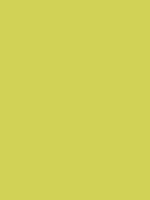#d1d256 Color Information
In a RGB color space, hex #d1d256 is composed of 82% red, 82.4% green and 33.7% blue. Whereas in a CMYK color space, it is composed of 0.5% cyan, 0% magenta, 59% yellow and 17.6% black. It has a hue angle of 60.5 degrees, a saturation of 57.9% and a lightness of 58%. #d1d256 color hex could be obtained by blending #ffffac with #a3a500. Closest websafe color is: #cccc66.
-
- R 82
- G 82
- B 34
-
- C 0
- M 0
- Y 59
- K 18
● #d1d256 color description : Moderate yellow.
#d1d256 Color Conversion
The hexadecimal color #d1d256 has RGB values of R:209, G:210, B:86 and CMYK values of C:0, M:0, Y:0.59, K:0.18. Its decimal value is 13750870.
| Hex triplet | d1d256 | #d1d256 |
|---|---|---|
| RGB Decimal | 209, 210, 86 | rgb(209,210,86) |
| RGB Percent | 82, 82.4, 33.7 | rgb(82%,82.4%,33.7%) |
| CMYK | 0, 0, 59, 18 | |
| HSL | 60.5°, 57.9, 58 | hsl(60.5,57.9%,58%) |
| HSV (or HSB) | 60.5°, 59, 82.4 | |
| Web Safe | cccc66 | #cccc66 |
| CIE-LAB | 82.012, -16.112, 59.713 |
|---|---|
| XYZ | 51.021, 60.321, 17.759 |
| xyY | 0.395, 0.467, 60.321 |
| CIE-LCH | 82.012, 61.848, 105.1 |
| CIE-LUV | 82.012, 4.69, 74.258 |
| Hunter-Lab | 77.667, -18.657, 40.81 |
| Binary | 11010001, 11010010, 01010110 |
Color Schemes with #d1d256
Alternatives to #d1d256
Below, you can see some colors close to #d1d256. Having a set of related colors can be useful if you need an inspirational alternative to your original color choice.
#d1d256 Preview
This text has a font color of #d1d256.
<span style="color:#d1d256;">Text here</span>This paragraph has a background color of #d1d256.
<p style="background-color:#d1d256;">Content here</p>This element has a border color of #d1d256.
<div style="border:1px solid #d1d256;">Content here</div>.text {color:#d1d256;}.background {background-color:#d1d256;}.border {border:1px solid #d1d256;}Shades and Tints of #d1d256
A shade is achieved by adding black to any pure hue, while a tint is created by mixing white to any pure color. In this example, #010100 is the darkest color, while #fbfbf1 is the lightest one.
-
#010100
#010100rgb(1,1,0) -
#111104
#111104rgb(17,17,4) -
#202009
#202009rgb(32,32,9) -
#30300d
#30300drgb(48,48,13) -
#3f3f11
#3f3f11rgb(63,63,17) -
#4e4f15
#4e4f15rgb(78,79,21) -
#5e5e19
#5e5e19rgb(94,94,25) -
#6d6e1d
#6d6e1drgb(109,110,29) -
#7d7d21
#7d7d21rgb(125,125,33) -
#8c8d25
#8c8d25rgb(140,141,37) -
#9b9c2a
#9b9c2argb(155,156,42) -
#abac2e
#abac2ergb(171,172,46) -
#babb32
#babb32rgb(186,187,50)
-
#c9ca37
#c9ca37rgb(201,202,55) -
#cdce47
#cdce47rgb(205,206,71) -
#d1d256
#d1d256rgb(209,210,86) -
#d5d665
#d5d665rgb(213,214,101) -
#d9da75
#d9da75rgb(217,218,117) -
#dede84
#dede84rgb(222,222,132) -
#e2e294
#e2e294rgb(226,226,148) -
#e6e7a3
#e6e7a3rgb(230,231,163) -
#eaebb3
#eaebb3rgb(234,235,179) -
#efefc2
#efefc2rgb(239,239,194) -
#f3f3d2
#f3f3d2rgb(243,243,210) -
#f7f7e1
#f7f7e1rgb(247,247,225) -
#fbfbf1
#fbfbf1rgb(251,251,241)
Tones of #d1d256
A tone is produced by adding gray to any pure hue. In this case, #989890 is the less saturated color, while #f9fb2d is the most saturated one.
-
#989890
#989890rgb(152,152,144) -
#a0a187
#a0a187rgb(160,161,135) -
#a9a97f
#a9a97frgb(169,169,127) -
#b1b177
#b1b177rgb(177,177,119) -
#b9b96f
#b9b96frgb(185,185,111) -
#c1c266
#c1c266rgb(193,194,102) -
#c9ca5e
#c9ca5ergb(201,202,94) -
#d1d256
#d1d256rgb(209,210,86) -
#d9da4e
#d9da4ergb(217,218,78) -
#e1e246
#e1e246rgb(225,226,70) -
#e9eb3d
#e9eb3drgb(233,235,61) -
#f1f335
#f1f335rgb(241,243,53) -
#f9fb2d
#f9fb2drgb(249,251,45)
Color Blindness Simulator
Below, you can see how #d1d256 is perceived by people affected by a color vision deficiency. This can be useful if you need to ensure your color combinations are accessible to color-blind users.
